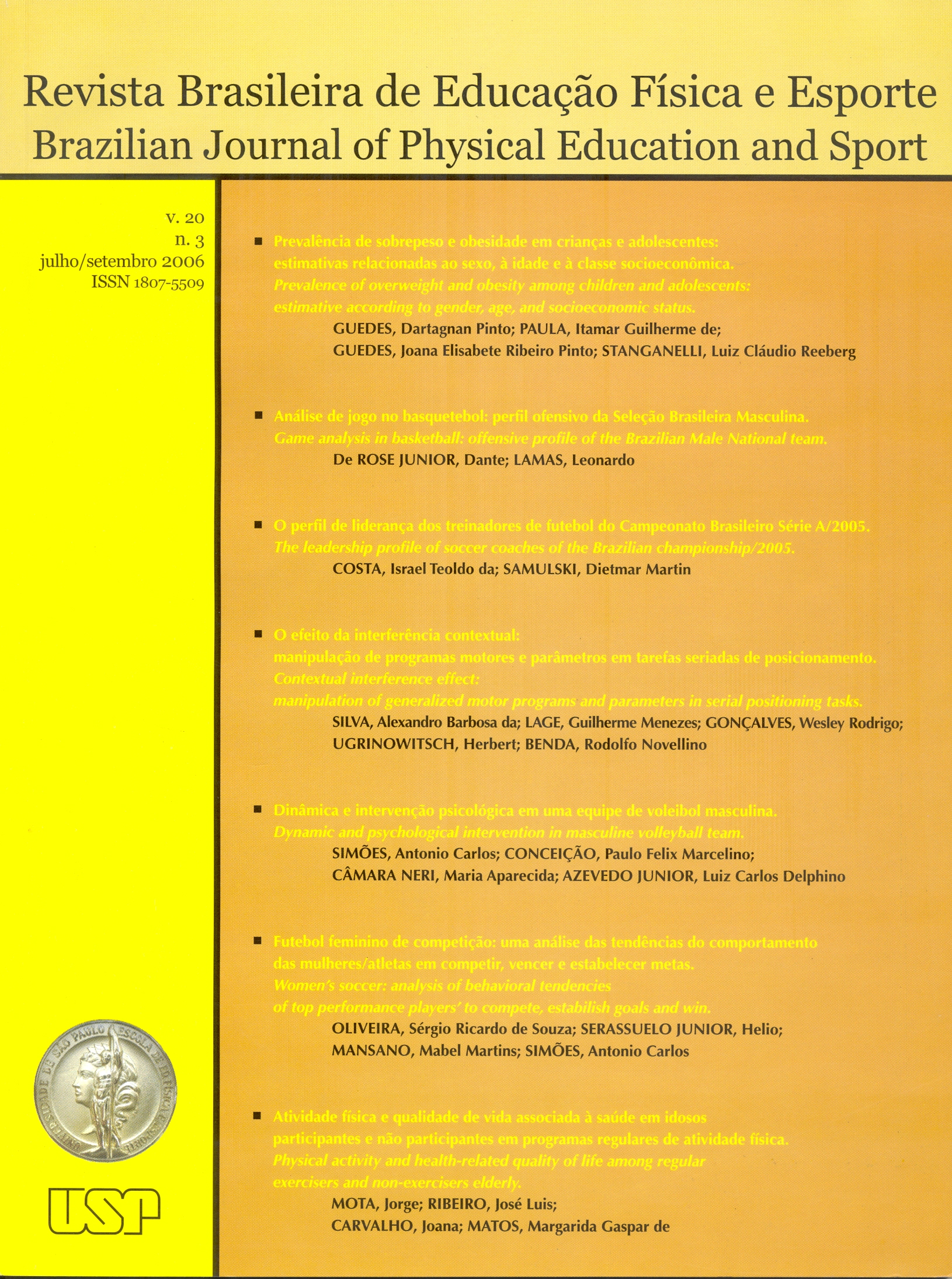Physical activity and health-related quality of life among regular exercisers and non- exercisers elderly
DOI:
https://doi.org/10.1590/S1807-55092006000300007Keywords:
Women, Exercise, Gerontology, Physical activity, Quality of lifeAbstract
This study goals were: 1) compare the health-related quality of life between elderly who attend formal exercise activities and those who did not and, 2) determine the predictive factors that allow such participation.The total sample was comprised of 88 subjects divided into two groups; the experimental group (EG, n = 46; males = 34.8%) who participated in a formal program of physical activity and the control group (CG, n = 42; males = 47.6%) who were not engaged in any type of formal physical activity program. The HRQL was assessed by the Portuguese version of MOS SF-36 (Medical Outcomes Study, Short Form - 36, Health Survey), a generic measure of health condition including 36 items covering eight dimensions. The EG presented significant better results in all of the SF 36 dimensions than the CG. Logistic regressions analysis showed (first model) that only gender (OR = 15.2; 2.9-80.2, 95% CI; p < 0.001) and physical function (OR = 1.07; 1.01-1.13, 95% CI; p< 0.02) had statistical significant association with belonging or not to the EG. However, the second model analysis showed that SF-36 score was significantly associated to activity (EG) (OR = 25.6; 5.4-120.9, 95% CI). This means that those who score low in a global measure of Quality of Life (SF-36) were likely more sedentary (CG). The results of this study showed that PA contributed towards a better HRQL in individuals over 65.Downloads
Downloads
Published
2006-09-01
Issue
Section
naodefinida
License
Todo o conteúdo da revista, exceto onde está identificado, está licenciado sob uma Licença Creative Commons (CC-BY)
How to Cite
Mota, J., Ribeiro, J. L., Carvalho, J., & Matos, M. G. de. (2006). Physical activity and health-related quality of life among regular exercisers and non- exercisers elderly . Brazilian Journal of Physical Education and Sport, 20(3), 219-225. https://doi.org/10.1590/S1807-55092006000300007


